Finding Tiny Faces
(CVPR 2017)
Peiyun Hu, Deva Ramanan
Robotics Institute
Carnegie Mellon University
1 /18
�
2 /18
�
outline
• 1.Introduction
• 2.exploring context and resolution
• 3.approach:scale-specific detection
• 4.experiment
• 5.conclusion
3 /18
�
1.Introduction
• Though tremendous strides have been made in object recognition, one of the
remaining open challenges is detecting small objects. We explore three aspects of
the problem in the context of face detection: the role of scale invariance,image
resolution and contextual reasoning.
• Scale invariance is a fundamental property of almost all current recognition and
object detection systems. But from a practical perspective, scale-invariance cannot
hold for sensors with finite resolution: the cues for recognizing a 300px tall face
are undeniably different that those for recognizing a 3px tall face.
4 /18
�
• what should the size of the template be?
• we want a small template that can detect small faces and a large template that can
exploit detailed features to increase accuracy. So,we train separate detectors
tuned for different scales .
• May suffer from lack of training data for individual scales and inefficiency from
running a large number of detectors at test time.
• To address,we train and run scale-specific detectors in a multitask fashion : they
make use of features defined over multiple layers of single (deep) feature hierarchy.
• While such a strategy results in detectors of high accuracy for large objects,finding
small things is still challenging.
5 /18
�
• How to generalize pre-trained networks?
6 /18
�
• How best to encode context?
Finding small objects is challenging because there is little signal to exploit. Hence we argue that one
must use image evidence beyond the object extent. This is often formulated as “context”.
7 /18
�
2.exploring context and resolution
2.1. Context
Figure 4: The green box
represents the actual face
size, while dotted boxes
represent receptive fields
associated with features
from different layers (cyan =
res2, light-blue = res3,dark-
blue = res4, black = res5).
Same colors are used in
Figures 5 and 7.
8 /18
�


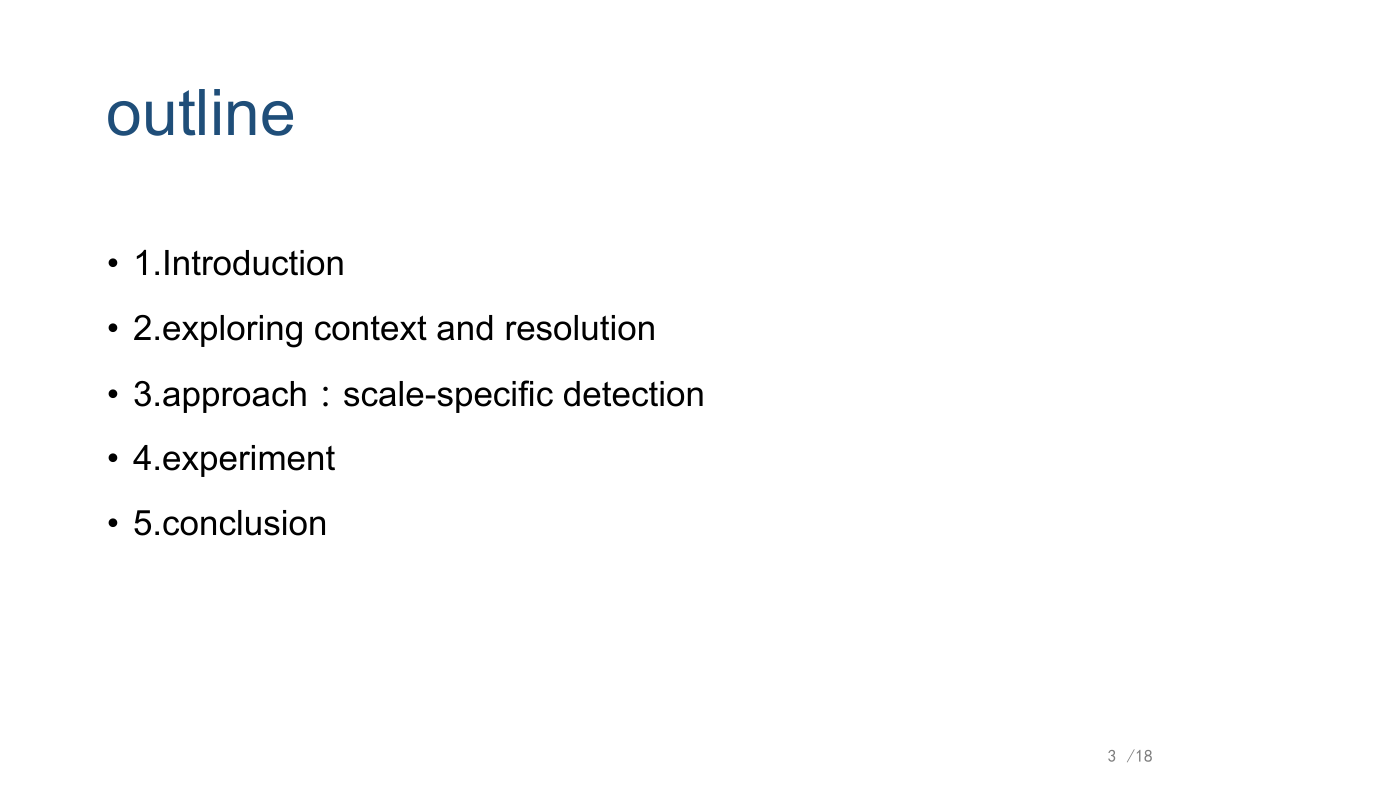
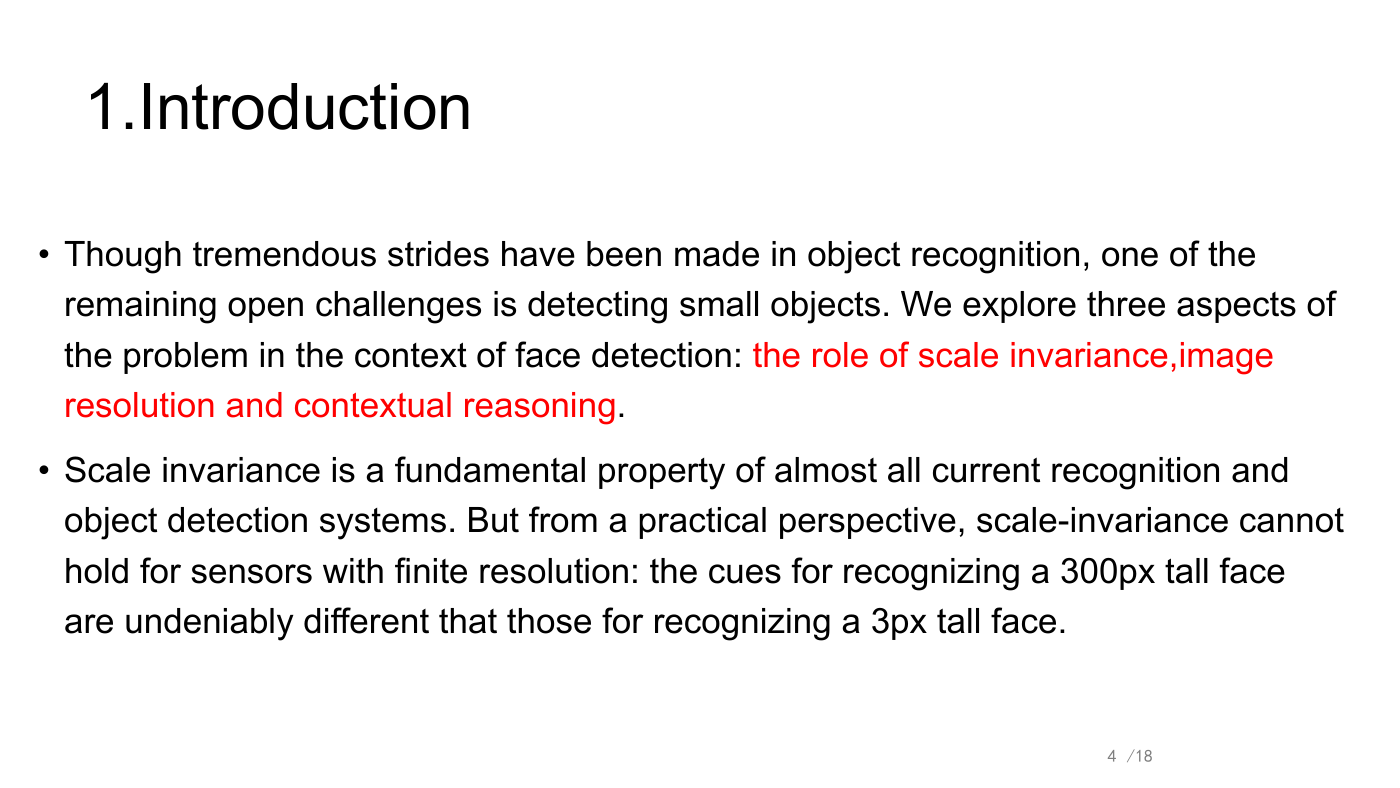
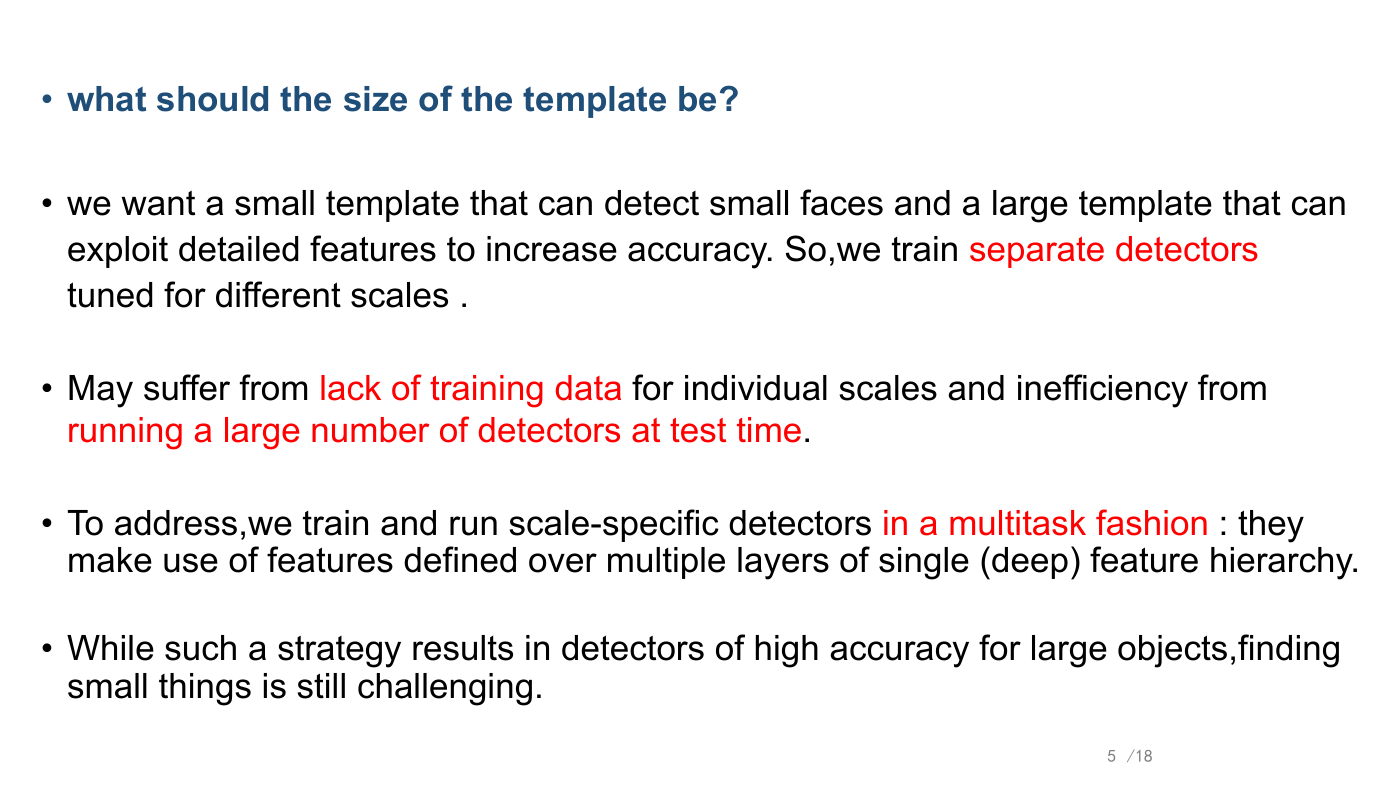
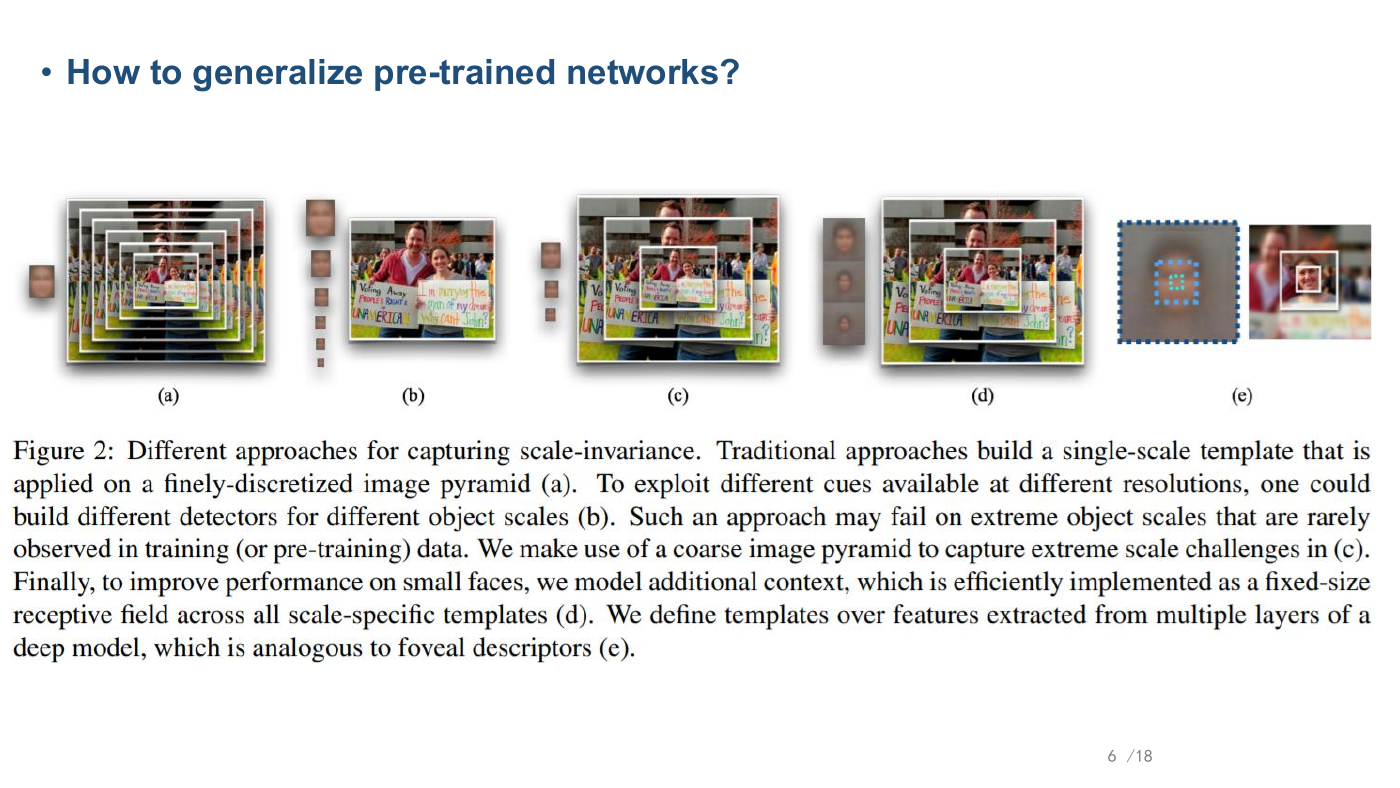

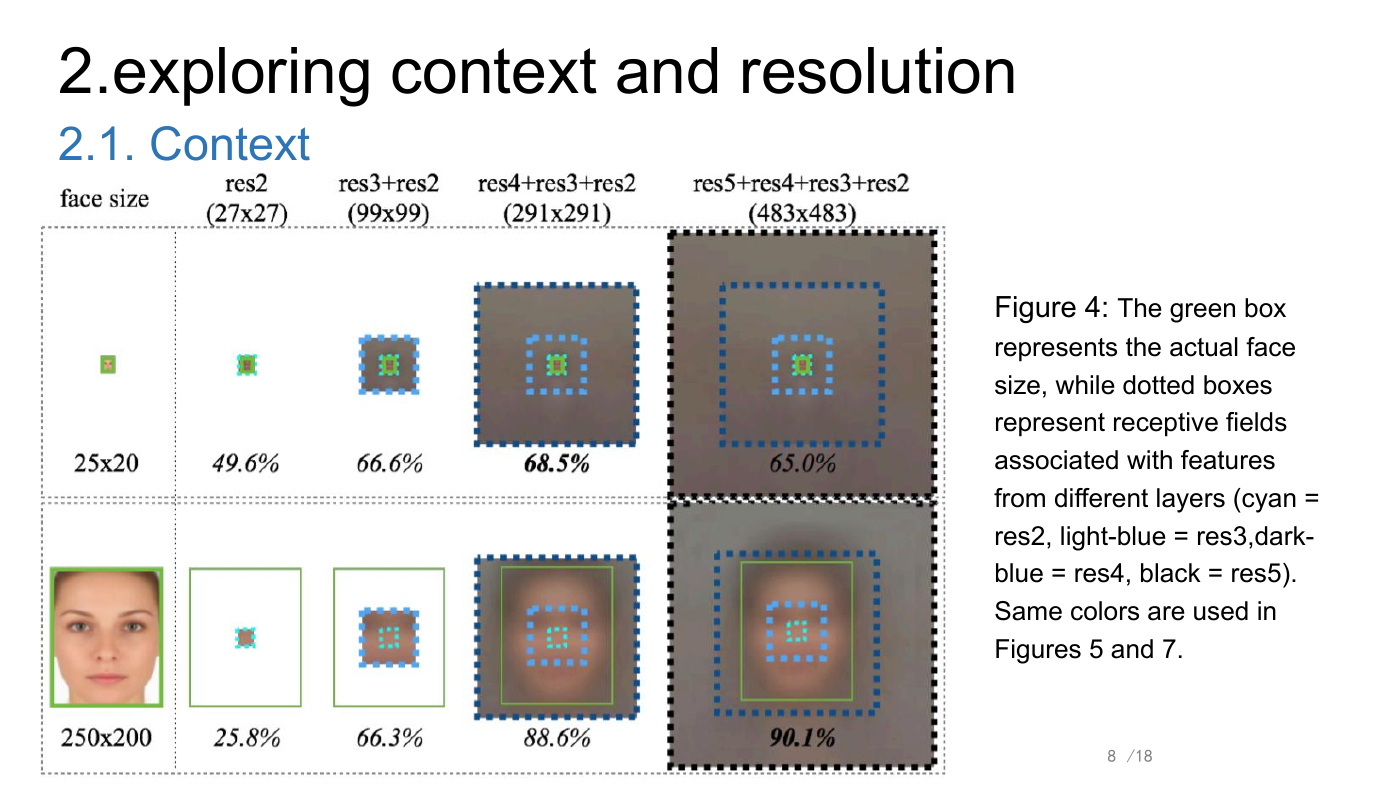








 2023年江西萍乡中考道德与法治真题及答案.doc
2023年江西萍乡中考道德与法治真题及答案.doc 2012年重庆南川中考生物真题及答案.doc
2012年重庆南川中考生物真题及答案.doc 2013年江西师范大学地理学综合及文艺理论基础考研真题.doc
2013年江西师范大学地理学综合及文艺理论基础考研真题.doc 2020年四川甘孜小升初语文真题及答案I卷.doc
2020年四川甘孜小升初语文真题及答案I卷.doc 2020年注册岩土工程师专业基础考试真题及答案.doc
2020年注册岩土工程师专业基础考试真题及答案.doc 2023-2024学年福建省厦门市九年级上学期数学月考试题及答案.doc
2023-2024学年福建省厦门市九年级上学期数学月考试题及答案.doc 2021-2022学年辽宁省沈阳市大东区九年级上学期语文期末试题及答案.doc
2021-2022学年辽宁省沈阳市大东区九年级上学期语文期末试题及答案.doc 2022-2023学年北京东城区初三第一学期物理期末试卷及答案.doc
2022-2023学年北京东城区初三第一学期物理期末试卷及答案.doc 2018上半年江西教师资格初中地理学科知识与教学能力真题及答案.doc
2018上半年江西教师资格初中地理学科知识与教学能力真题及答案.doc 2012年河北国家公务员申论考试真题及答案-省级.doc
2012年河北国家公务员申论考试真题及答案-省级.doc 2020-2021学年江苏省扬州市江都区邵樊片九年级上学期数学第一次质量检测试题及答案.doc
2020-2021学年江苏省扬州市江都区邵樊片九年级上学期数学第一次质量检测试题及答案.doc 2022下半年黑龙江教师资格证中学综合素质真题及答案.doc
2022下半年黑龙江教师资格证中学综合素质真题及答案.doc